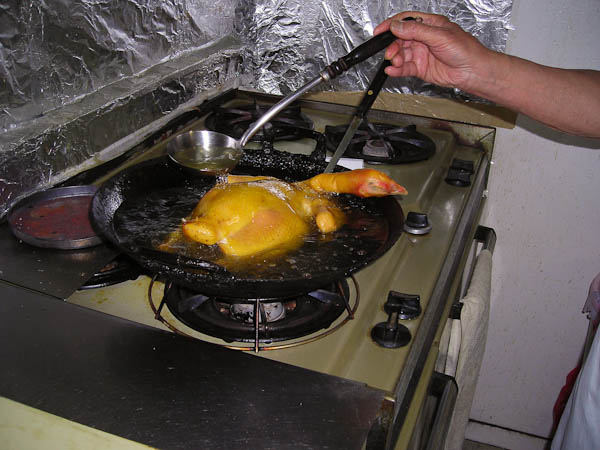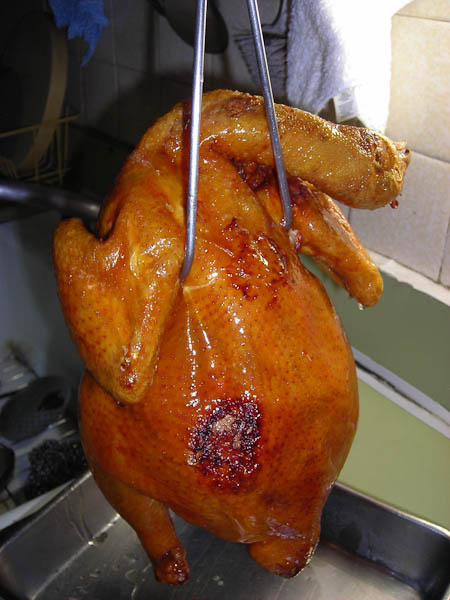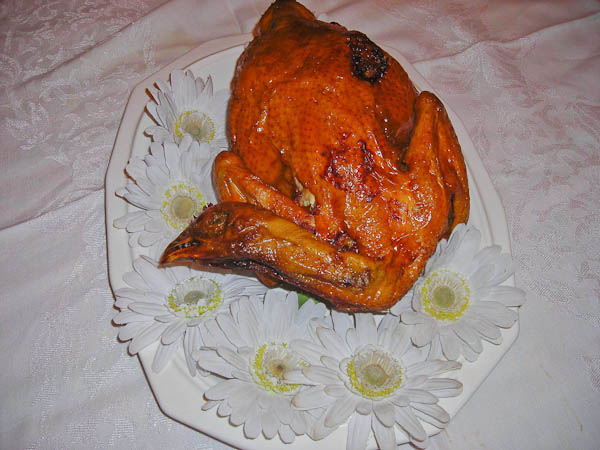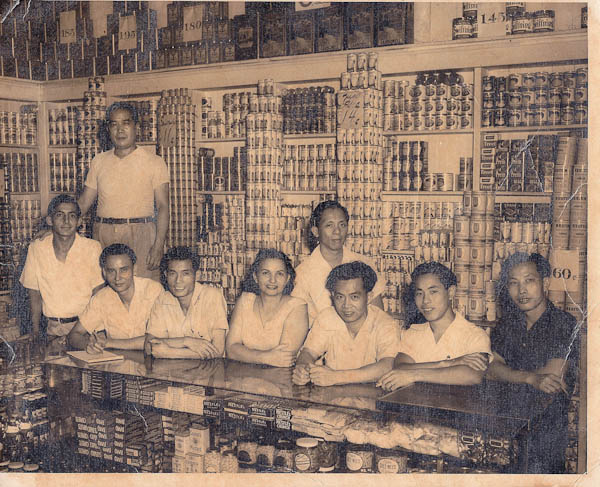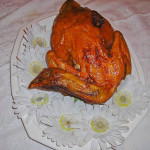When I think about my culinary influences, there is a certain chef that comes to mind first: Antonio Lee. The man, the legend, my grandpa. My mother’s father, known to us as Gong Gong, worked as a cook for a number of years in New York’s Chinatown, and also opened up a restaurant of his own called Jade East, out on Long Island circa 1965.
Growing up, I didn’t know all the details, but what I did know was, my grandpa must have been a big deal (or a Chinese mafioso) because everyone in town knew him. We always got the star treatment when we dined out in Chinatown.
Gong Gong shaped many of my earliest food memories. He introduced me to the gold standard of char siu bao at an early age. While my older brother was in school (sucka), Gong Gong and I would hold court at our booth at Hop Sing. Chinese newspaper in hand, he would sip on his coffee with cream while I tried to wrap my two-year-old mind around the layered complexity of the barbecued pork bun in my chubby little fist. It was savory, it was sweet, it was meaty, yet it was a bun. What was this sorcery? I still don’t know.
While my parents worked, Gong Gong made us dinner. The things that came out of that tiny New York apartment kitchen would astound. Steak broiled in a toaster oven? You betcha. Soups, whole fish, stir frys, fried chicken, short ribs, lobster in XO sauce…you name it, all made with pretty much one pot, a cleaver, a wok, and a rice cooker. There was no sous vide immersion circulator, no Vitamix, no fancy gadgets or expensive cookware. There was barely a wooden spoon in that kitchen. Come to think of it, I don’t think he even had a wooden spoon.
On holidays and special occasions, my grandma, Paw Paw, would be in charge of special dishes like deep fried glutinous rice dumplings (ham sui gok), turnip cake (lo bok go), and sticky rice wrapped in lotus leaves (jong), but certain dishes fell firmly in Gong Gong’s territory. Like his famous crispy Chinese Fried Chicken (ja jee gai).
My grandpa would season that chicken with his secret salt and spice blend and hang it from its neck to dry out for a day by the window, next to his army of orchid plants. By the time that chicken got sick of the view, it would be ready for its hot oil jacuzzi bath. The air-dried skin would crisp up golden and crackly, while the meat stayed juicy and tender. Perfection every time.
Gong Gong passed away last week at the ripe old age of 92. And while I am comforted knowing he lived a full life, I am still filled with sadness and regret for not having sooner asked him all the questions I have: What were your favorite parts of life from China to Cuba to Miami to New York City? What’s the best meal you ever had? What was your signature dish at Jade East? Where in the world do you wish you had seen? What’s the first thing you ever cooked for Paw Paw? What was my mom like as a child? What exactly do you rub on that fried chicken? Why are your barbecued short ribs so stupid delicious?
My aunt attempted to document grandpa’s crispy fried chicken recipe last year when I was working on a recipe book for my brother’s wedding. There are some holes in it, and the quantities and timing may need tweaking, but I’ll include it anyway as a road map, until I am hopefully able to reproduce it one day (or at least come acceptably close).
Thank you, Gong Gong, for the things you’ve taught me. I hope I can accomplish a fraction of what you’ve done in your lifetime, and fry a chicken you’d be proud of.
This was one of my grandpa’s famous dishes. The chicken is allowed to air-dry at least 8 hours to ensure an extra crispy, crackling, golden skin. This recipe is a work in progress, as I’m still trying to sleuth out parts of the recipe, but for now, I wanted to post this as a road map. Happy navigating!
Ingredients
- 2 lb whole chicken
- 2 teaspoons maltose syrup (Yu Yee brand)
- 2 tablespoons Chinese black vinegar (Great Wall brand)
- 2 tablespoons secret 8-spice seasoned salt blend*
Instructions
- Clean the chicken, removing any goodies left in the cavity. Rub the cavity of the chicken with the salt blend.
- Bring a large pot of water to a boil. Add the maltose syrup and vinegar to the water. Stir until the syrup dissolves.
- Hold the chicken by the neck over the pot of hot water. Using a ladle, shower the chicken with hot water a spoonful at a time. Do this about 15-20 times until the chicken takes on a golden tan.
- Hang the chicken by the neck by the window to air dry for at least 8 hours, preferably overnight. Don’t worry, the chicken will not spoil in room temperature for the extended period of time because the cavity has been cured with salt. (If this makes you nervous, you can also try placing the chicken on a wire rack and drying it out in the fridge). This process will prevent the oil from spattering when you deep fry the chicken.
- When you are ready to fry the chicken, fill a large wok three quarters of the way full with vegetable oil. Turn the flame up high to heat up the oil. Once the oil is very hot, place the chicken breast down into the wok and cook for 10 minutes. Three quarters of the chicken should be submerged in the oil. As the breast is being cooked, use a ladle to baste the top of the chicken with the hot oil.
- Carefully turn the chicken so that the breast faces up. Cook for 5 minutes. Baste the breast of the chicken with hot oil as the back is being cooked.
- Lift the chicken out of the wok and place on a paper towel-lined tray to absorb the excess oil. Serve with a little dish of that special seasoned salt for dipping.
Notes
I’m told that Gong Gong’s proprietary seasoned salt is a blend of 8 spices. Essentially, Chinese five spice plus a few extra. Here are some spices I’d start playing with: black pepper, white pepper, Sichuan pepper, cinnamon, star anise, fennel seed, clove, ginger, nutmeg, orange peel...
Once you’ve nailed your spice blend, make the seasoned salt by dry-roasting Kosher salt with your ground spices, stirring and shaking the pan until the spices are toasted and fragrant.
Recipe Source: LickMySpoon.com.
Hello! All images and content are copyright protected. Please do not use our images without prior permission. If you want to republish this recipe, please re-write the recipe in your own words, or simply link back to this post for the recipe. Thank you!
This recipe is brought to you by LICK MY SPOON
http://lickmyspoon.com/recipes/antonio-lee-the-chef-the-legend-the-grandpa/

